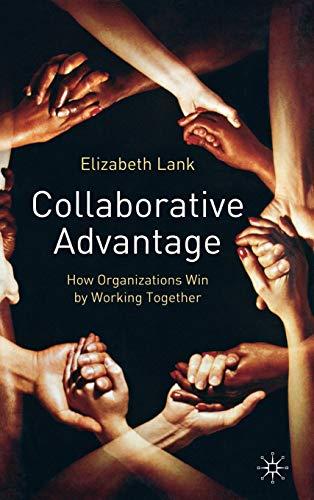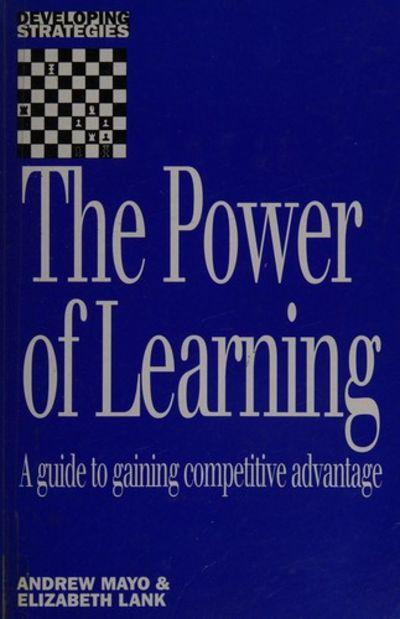Lucidea’s Lens: Knowledge Management Thought Leaders Part 38 – Elizabeth Lank

Stan Garfield

Now retired, Elizabeth worked as an independent specialist with organizations to help them improve efficiency and effectiveness through greater cross-boundary collaboration and knowledge sharing.
She had a particular interest in helping leaders harness knowledge and information as business assets. Having studied cultural anthropology in college, she gained an early appreciation of the natural human tendency to be tribal – a trait that can be positive in terms of group identity but that can also lead to a counter-productive “us and them” attitude, for example between different business units of the same company.
Before setting up her own business in 2001, Elizabeth worked for IT services company ICL (now Fujitsu Services) for fourteen years in different organizational and leadership development roles, including leading ICL’s Mobilizing Knowledge program for five years. In addition to her advisory role on collaborative working, she was a speaker, facilitator, and program director at business school and in-company leadership development programs.
Elizabeth published multiple articles and books on collaborative working. She was born in Canada, grew up in Switzerland, went to Mount Holyoke College in Massachusetts for her undergraduate years, earned her business degree at INSEAD in France, and has lived in the UK for nearly 40 years. She spent the early part of her career working for the European headquarters of an American computer company in Geneva, Switzerland. She was a member of the international editorial boards of the Journal of Change Management, the Journal of Knowledge Management, and Knowledge Management Review.
Education
- INSEAD – Master of Business Administration, 1986
- Mount Holyoke College – Bachelor of Arts, Cultural Anthropology, 1980
Experience
- Collaborative working facilitator and consultant, 2001 – 2019
- ICL (now Fujitsu Services), Organizational and leadership development roles, 1986 – 2000
Profiles
“Knowledge management is common sense, but not common practice.”
Books
Collaborative Advantage: How Organizations Win by Working Together

Table of Contents and Chapter Previews
- Introduction
- Developing a Common Language
- Preparing to Collaborate
- Structuring
- Integrating the Team and Agreeing Joint Outcomes
- Nurturing the Collaborative Process
- Resourcing the Collaborative Effort
- Communicating and Sharing Information
- Learning
- Collaborative Skills, Leadership, and Specialist Roles
- Internal Collaboration
- Developing Collaborative Capacity
- Back Matter
Communities of Influence: Improving Healthcare through Conversations and Connections with Alison Donaldson and Jane Maher

The Power of Learning: A Guide to Gaining Competitive Advantage with Andrew Mayo

Good Practices in Knowledge Creation & Exchange with Amin Rajan and Kirsty Chapple
Chapter in Knowledge Management: A Real Business Guide, edited by Stuart Rock
Co-author of a chapter in Human Resource Management in International Firms: Change, Globalization, Innovation, edited by Paul Evans, Yves Doz, and André Laurent
Other Content
Audio recording: Stimulating organizational learning through networks and communities
Articles
- Semantic Scholar
- ResearchGate
- Google Scholar
- A knowledge-conscious curriculum
- “Using CoP’s to innovate KM at Macmillan” in Knowledge Management Review, Volume 7, Issue 5, December 2004 – co-authored with Alison Donaldson and Jane Maher
- “Gaining the knowledge perspective: Reflecting on ICL’s lessons learned” in Knowledge Management Review, Volume 1, Issue 1, March 1998
- Building Structural Capital: A New Key to Generating Business Value
Book Foreword
Knowledge Management: A Blueprint for Delivery by Tom Knight and Trevor Howes
I still remember the day in early 1996 that I stepped into a new role at IT services company ICL [since April 2002, merged with Fujitsu to become Fujitsu Services], as head of a new CEO-sponsored initiative known as the Mobilizing Knowledge program. How I wish I could have referred to a book like this one! The challenge that I had been set was as follows: how could a company of twenty thousand people, spread across more than thirty countries, harness the knowledge it held so that its customers could benefit from its global breadth of experience, not just the knowledge base of the local office? The newly appointed CEO was determined to create a way of working that ensured that the company ‘knew what it knew’ and that its customers could benefit as a result.
I had been interested for some time in the practical challenges of creating so-called ‘learning organizations’, so I took on the role with great enthusiasm. What interested me was not academic theory but the nitty-gritty practicalities of what you do on Monday morning, to really make a difference. As I said, I didn’t have the benefit of a book like this. I started with a largely blank sheet of paper and embarked on a journey that led in many fascinating directions.
The benefit of working in a new field is that you seek out fellow pioneers who share your interest and enthusiasm for the subject. In my time at ICL I discovered a number of fellow enthusiasts who believed in the huge potential of effective knowledge sharing and wanted to share ideas and experience with each other. We formed a cross-company community – nicknamed *MobKnow’ – which developed a pattern of meeting roughly every two months. We learned from each other, challenged each other, and supported each other in times when it sometimes felt that we were speaking a different language to some of our colleagues. The authors of this book were two of the mainstays of that community and have kept its momentum going to this day, long after I (as community founder) had made the leap out of corporate life to mobilize my own knowledge in new settings.
Communities of people who want to share what they know — this of course is the foundation for the effective mobilization of knowledge. The ‘MobKnow’ network in ICL had its electronic space on the company’s intranet but its vitality and usefulness came from the face-to-face discussions that took place. Community members came from many parts of the business, linked by their common interest in knowledge management. Every organization has these communities, but they rarely appear on the organization charts. They cross business, functional and geographic boundaries and they are among the primary channels for knowledge flows. Technology acts as a supporting infrastructure but it is the connections between people that turn an individual’s knowledge and experience into a real organizational asset.
Leaders in 21st century organizations are beginning to appreciate that the competitive advantage of their organizations depends on their ability to foster as many connections between people as possible, building the channels of trust and communication that ensure they will have not just intelligent people but intelligent companies. With luck they will have people like Tom and Trevor in their organizations, catalysts for change who will advise them on how best to tackle this challenge. And whatever happens, they now have this book to turn to for inspiration and practical advice.

Stan Garfield
Please enjoy Stan’s blog posts offering advice, analysis, and insights drawn from many years as a KM practitioner. You may want to download a free copy of his book, Lucidea’s Lens; Special Librarians & Information Specialists: The Five Cs of KM from Lucidea Press, and its precursor, Proven Practices for Implementing a Knowledge Management Program. Learn about Lucidea’s Presto, SydneyEnterprise, and GeniePlus software with unrivaled KM capabilities that enable successful knowledge curation and sharing.
Never miss another post. Subscribe today!
Similar Posts
Lucidea’s Lens: Knowledge Management Thought Leaders Part 79 – David Garvin
KM expert David Garvin was a proponent of organizational learning to counter unpredictability in market forces and technology advances.
Lucidea’s Lens: Knowledge Management Thought Leaders Part 78 – Carl Frappaolo
KM expert Carl Frappaolo was the creator of Delphi’s Knowledge Management Methodology (KM2)
Lucidea’s Lens: Knowledge Management Thought Leaders Part 77 – Leif Edvinsson
Leif Edvinsson, Professor Emeritus at Lund University in Sweden, specializes in Intellectual Capital Management of Enterprises, Cities, and Nations
Lucidea’s Lens: Knowledge Management Thought Leaders Part 76 – Seth Earley
Seth Earley works in cognitive computing, knowledge engineering, data management systems, taxonomy, ontology, and metadata governance strategies.

Leave a Comment
Comments are reviewed and must adhere to our comments policy.
0 Comments